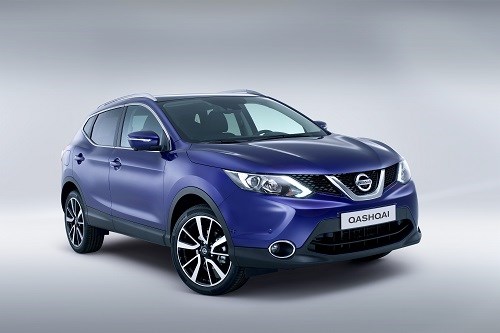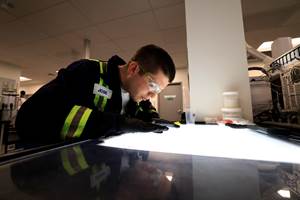Borealis Pushes PP In Automotive Development Projects
New high-fluidity PP grades from Borealis applied to new vehicles from the Renault-Nissan Alliance exemplify the trend of using a focused PP product portfolio on common global OEM platforms.
A new range of PP materials have been developed by Borealis specifically to meet the specifications defined by the Renault-Nissan Alliance product portfolio strategy with the aim to apply them globally on all new cars. The move exemplifies the trend of using a focused PP product portfolio on common global OEM platforms—such as the “Common Module Family” (CMF), the engineering architecture that covers Renault-Nissan Alliance vehicles for the global compact and large car segments--to bring the cost-performance ratio to the next level.
CMF is not a conventional “platform sharing” scheme, according to a spokesman for the Alliance. Rathers, it’s a modular architecture system that dissects the vehicle into five fundamental zones—knows as the “4+1 Big Modules.” These big modules include four basic body units (engine compartment, cockpit, front underbody and rear underbody), plus a fifth unit comprising the vehicle’s electrical and electronic architecture. Designers, engineers and product developers can “mix and match” these big modules flexibly to create an unusually large variety of vehicles—from urban subcompacts to compacts, mid-size sedans, crossovers and SUVs. CMF’s three primary categories are : CMF-A, small fuel-efficient cars; CMF-B, mid-sized cars; and, CMF-C/D, larger vehicles, including many Renault, Dacia, Nissan and Datsun brands.
By 2020, when CMF is fully deployed in plants worldwide, 70% of all of the Alliance’s vehicles with fall within the CMF scope. The Alliance says, CMF means more choices, higher quality and better value for its customers. Moreover, sharing the technical architecture among a wide variety of models enables the Alliance to dramatically simplify engineering and manufacturing processes. The approach is expected to cut engineering costs by up to 40% and purchasing costs by as much as 30%. The savings allow product planners to add high-value items for customers (such as lane departure warning, around-view monitor and automatic parking in the case of the first CMF vehicles now rolling off assembly lines, like the Nissan Roque (USA) and Nissan Qashqai (UK).
In fact, the first and latest vehicle using the CMF-C/D segment modular platform is the Quashqai, for which Borealis supplied two PP specialty materials: EG066AI for door panels and MG160AI for interior trims. Key benefits cited for these high-fluidity PP grades include: easy processing resulting in increased production efficiency; high-scratch resistance; and, excellent surface aesthetics.
Borealis’ global OEM manager Frank Lagoutte says, these materials deliver maximum value and performance and will be used on other vehicles from the CMF platform in the coming months such as the Nissan X-Trail (produced in multiple plants worldwide). He notes that Borealis and Borouge, its joint venture with the Abu Dhabi National Oil Company, are striving to provide weight and cost savings to the Alliance with new generations of materials for dashboard, bumper and other structural parts, such as its Fibremod family of fiber-reinforced PP used in structural applications such as front-end modules, air-intake manifolds and tailgate structures.
Want to find or compare materials data for different resins, grades, or suppliers? Check out Plastic Technology’s Global 
Related Content
Fundamentals of Polyethylene – Part 5: Metallocenes
How the development of new catalysts—notably metallocenes—paved the way for the development of material grades never before possible.
Read MoreNew Entrant Heartland Polymers Stepping up as Reliable Supplier
Heartland Polymers’ new Alberta, Canada facility will produce 525 KTA propylene and 525 KTA polypropylene. It is expected to stabilize supply chains across the continent.
Read MoreFundamentals of Polyethylene – Part 3: Field Failures
Polyethylene parts can fail when an inappropriate density is selected. Let’s look at some examples and examine what happened and why.
Read MoreThe Fundamentals of Polyethylene – Part 2: Density and Molecular Weight
PE properties can be adjusted either by changing the molecular weight or by altering the density. While this increases the possible combinations of properties, it also requires that the specification for the material be precise.
Read MoreRead Next
Troubleshooting Screw and Barrel Wear in Extrusion
Extruder screws and barrels will wear over time. If you are seeing a reduction in specific rate and higher discharge temperatures, wear is the likely culprit.
Read MoreWhy (and What) You Need to Dry
Other than polyolefins, almost every other polymer exhibits some level of polarity and therefore can absorb a certain amount of moisture from the atmosphere. Here’s a look at some of these materials, and what needs to be done to dry them.
Read MoreUnderstanding Melting in Single-Screw Extruders
You can better visualize the melting process by “flipping” the observation point so that the barrel appears to be turning clockwise around a stationary screw.
Read More















.png;maxWidth=300;quality=90)










